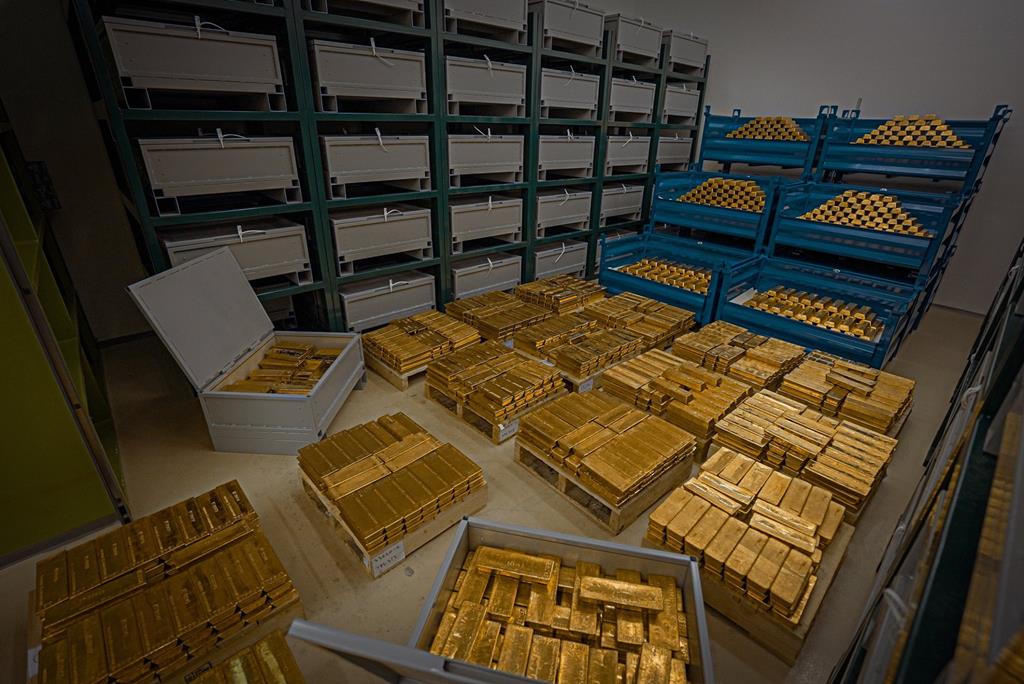The fascinating story of saving Hungary’s gold in the 1940s

The Gold Train began one of the most adventurous journeys in Hungarian history on 23 January 1945. The Hungarian National Bank’s 30 tonnes of gold reserves, large foreign currency reserves and deposited valuables and documents (such as King Matthias’ Corvinas) were attempted to be evacuated to the West by the Szálasi government (Government of National Unity, a Nazi-backed puppet government of Hungary) to escape the advancing Soviet Red Army.
Ferencné Tóth Mária Stark, who was among the passengers of the legendary Gold Train as a small child, shared her personal story with Növekedés.hu.
Historical background

On 19 March 1944, German troops invaded Hungary. On 15 October, the Arrow Cross Party took power in the country and established the coalition Government of National Unity on 16 October.
László Temesváry was appointed head of the Hungarian National Bank (MNB), and the Soviet advance soon led to negotiations on the export of Hungarian gold reserves to the West, Növekedés.hu recalls.
The German leadership aimed to have the assets housed in several parts of the German Reich. If implemented, this would most likely have led to Hungary’s national treasures falling into German hands for good. However, the bank’s employees resisted political pressure.
In December, the Gold Train set off from the bunker in Veszprém with the heroic employees of the MNB to deposit the “nation’s gold” in Spital am Pyhrn in Austria after a cold and fearful Christmas in Fertőboz.
The train rolled out of Fertőboz station on 23 January and arrived in Spital am Pyhrn on 25 January, where the treasures were stored in the crypt of the local Benedictine monastery.
On 7 May 1945, Spital am Phyrn was occupied by American troops. US soldiers took the Hungarian gold reserve to Frankfurt am Main, where it was stored in the basement of the German central bank.
In June 1946, negotiations took place in Washington to return the valuables held in Spital am Phyrn and Frankfurt am Main to Hungary.
The Hungarian delegation was led by Prime Minister Ferenc Nagy. The US finally agreed to repatriate the Hungarian gold reserve and other valuables. This gold reserve was the collateral for the newly introduced forint.
The illustrated story of saving Hungary’s gold (unfortunately, only in Hungarian):
Narrative history – the memories of a passenger of the Gold Train
The father of Ferencné Tóth Mária Stark was an employee of the Hungarian National Bank, first as a cashier in Budapest, then in Szeged, and finally in Târgu Mures. Mária was born in Târgu Mures.
She was three months old when they had to leave Târgu Mures.
To escape the approaching Russians, her father and his colleagues used a truck to rescue the bank ledgers. Her mother and Mária were first taken to Dej, and finally, the family met in Csesznek.
“In Veszprém, the valuables were hidden in a bunker under the castle and we knew we were going to Austria by train. We also knew what the cargo would be,” Mária told Növekedés.hu.
The Germans were in front of them, the Russians behind them. When the train left Fertőboz, Russians had not yet arrived, but the bombing was already in full swing. Everybody knew what danger they were in.
A cold and fearful Christmas in Fertőboz
The passengers spent Christmas in Fertőboz. The children were accommodated in first-class coaches. The people of Fertőboz provided them with food. At Christmas time, they were the ones who put up a Christmas tree for the children in the wagon. While they were waiting, there were several bombings, so they hid in the wagons. They had nowhere else to go.
Mária is still afraid of thunder to this day.
According to Mária, they were made very welcome by the locals in Spital am Phyrn.
When we arrived by train, there was a good metre of snow. The bank workers, including my dad, were using sledges to haul the 33 tonnes of gold and other valuables down to the basement of the monastery,
Mária shared.
On the way home
Mária and her family came home with the last consignment in October 1946. They already had their train tickets and boat tickets to Argentina; however, the trip was cancelled because her father said,
I’m Hungarian, I want to go home.
After they came home, her father was fired from the Hungarian National Bank in 1948.
“This is a very sad memory for me,” Mária said. They had to move out of the flat they had been living in, and they exchanged it for a small flat. Her mother worked as a caretaker and her father as a conductor.
Mária has personally experienced discrimination in Hungary. In 1957, they moved to Sopron. After high school, she wanted to go to university. However, the headmistress in Sopron told Mária to “not even try” because she was a “Westerner”.
To this day, it still hurts me that I didn’t get to go to university because I went abroad as a baby. But my father instilled in me that I am Hungarian, so I belong here.
Read also:
- Why did Hungarian soldiers fight and die against the Soviets East from Ukraine, in the Don bend?
- Meet the 3rd largest labyrinth in the world, the Hungarian Csillagösvény
Source:

